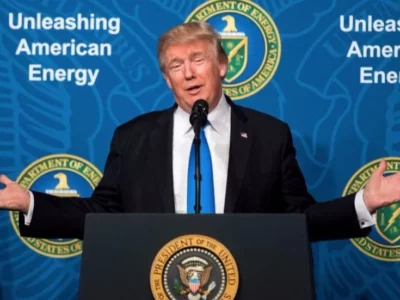More on EPA approval of the Hobet 45 mountaintop removal permit
Cross-posted at CPR Blog.
On Monday, EPA signed off on the Corps of Engineers’ issuance of a Clean Water Act § 404 permit to Hobet Mining for a mountaintop removal coal mining project in West Virginia. The decision is important because it’s the first product of the process announced last fall for joint EPA / Corps review of a large number of pending permit applications. It’s troubling for several reasons. First and most simply, it allows a major mountaintop mining project to go ahead, and suggests that more will follow. Second, despite EPA Administrator Lisa Jackson’s repeated public statements about bringing clarity to the process, this decision offers essentially no window into the principles EPA thinks should guide these decisions. Third, it promises an environmental outcome that can’t be assured through the adaptive management provisions included in the approval.
NRDC’s Rob Perks makes a strong case that “When it comes to regulating the world’s worst coal mining, you simply can’t mend it, you must end it.” But institutional realities may make it hard for regulators to see or respond to the full extent of the problem. The Clean Water Act in general, and § 404 in particular, don’t comfortably encompass all the environmental consequences of this enormous scale earthmoving. This week’s issue of Science magazine has an important article about the ecological and human health consequences of mountaintop removal and valley fills (subscription required, hat tip to Coal Tattoo, which has a more detailed description of the study). Not surprisingly, those consequences go beyond the water quality problems created by dumping mining waste into headwaters streams. They include loss of habitat where the mountaintops are blown off, accelerated runoff from denuded areas, and airborne hazardous dust. Those impacts are unlike the impacts of the actions EPA and the Corps are most used to dealing with under the Clean Water Act, industrial effluent discharge and wetlands fill for development. It would be understandable if EPA, the Corps of Engineers, and the Department of Interior (which regulates surface mining) are struggling with how to take them into account.
Critics of mountaintop removal argue that even ignoring those additional impacts, the direct water quality consequences of valley fills are more than sufficient to justify prohibiting this type of mining. The Science article supports that position. The authors write that
Below valley fills in the central Appalachians, streams are characterized by increases in pH, electrical conductivity, and total dissolved solids due to elevated concentrations of sulfate (SO4), calcium, magnesium, and bicarbonate ions. The ions are released as coal-generated sulfuric acid weathers carbonate rocks. Stream water SO4 concentrations are closely linked to the extent of mining in these watersheds. We found that significant linear increases in the concentrations of metals, as well as decreases in multiple measures of biological health, were associated with increases in stream water SO4 in streams below mined sites. Recovery of biodiversity in mining waste-impacted streams has not been documented, and SO4 pollution is known to persist long after mining ceases.
But there’s some room for confusion in the way the Clean Water Act is set up, and certainly in the expectations that have been raised by the Act’s cavalier implementation over the last decade or more, about just what those impacts mean for permit evaluation. On one hand, the Clean Water Act seems to flatly prohibit the issuance of any point source discharge permit that would cause a violation of water quality standards. On the other hand, the § 404 guidelines provide a much more general and discretionary review, focusing on the “least environmentally damaging practicable alternative” test, and § 404 practice has been premised on the assumption that many impacts can be adequately mitigated. That flexibility doesn’t properly extend to water quality violations, but permit applicants have gotten used to seeing the permitting process as a generalized negotiation. At least the Obama administration is making sure that EPA is included with the Corps in that negotiation.
Unfortunately, though, it looks like EPA is endorsing the Corps’ historic approach of negotiating outside the public eye and without any publicly identified standards, limits, or principles. This EPA could and should do better. The agreement will, according to EPA, cut the length of stream buried (“physical stream impacts” in agency-speak) in half, while allowing the company to get 91% of the coal it was after. That sounds like good math in terms of cost-effectiveness, but why is it the right trade under the Clean Water Act? Did the agency use that math in its decision, or is it just a happy accident? Did it matter to EPA that this is a union mine, unlike many in the region? We are left to wonder.
EPA has an answer which sounds good on its face but doesn’t stand up to scrutiny. The activity as proposed will “be protective of water quality impacts.” Aside from the squirrely language (it doesn’t quite say there won’t be water quality violations, does it?), there’s little assurance that the promised protections will be real or lasting.
EPA is relying on a monitoring and adaptive management plan appended to its letter to the Corps. The monitoring part looks pretty good — it calls for regular monitoring, at specified locations, or specified chemical and biological parameters. But the adaptive management part is empty. It sets a cap for only one parameter (conductivity), and if that cap is exceeded, it says only that a consultant will make some recommendations which the mining company will implement if the regulatory agencies approve. That’s not exactly reassuring, given the importance of other parameters like pH and metal concentrations, the obvious incentives for consultants to minimize response costs, the history of regulatory agencies caving to focused pressure from regulated entities, and the lack of any clear citizen enforcement hook.
Reader Comments
One Reply to “More on EPA approval of the Hobet 45 mountaintop removal permit”
Comments are closed.






EPA caved.